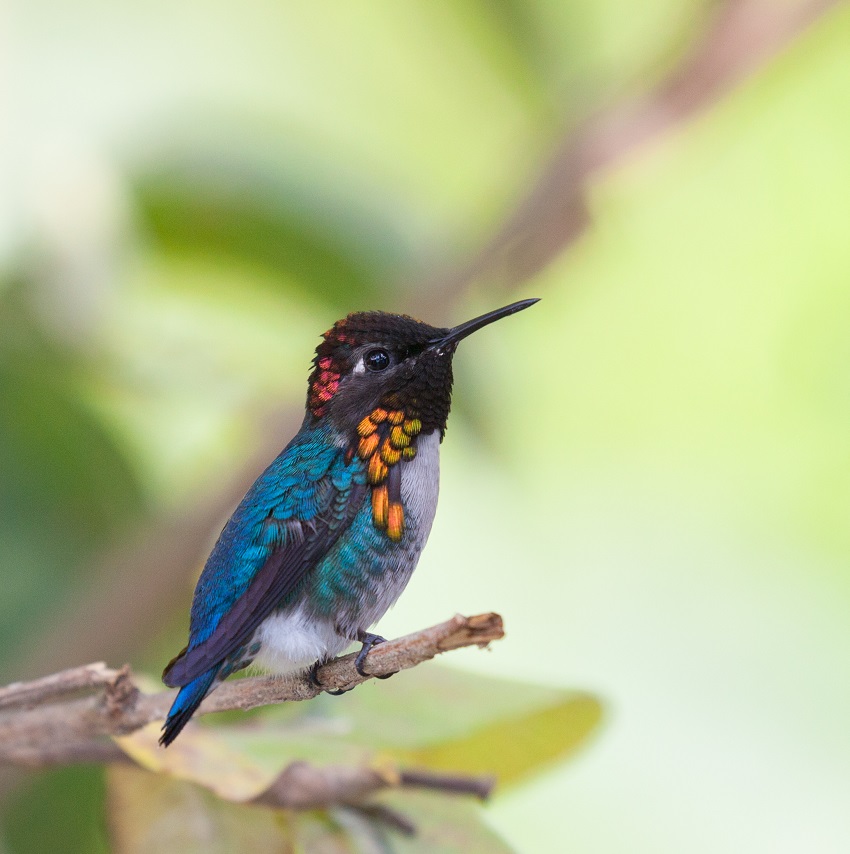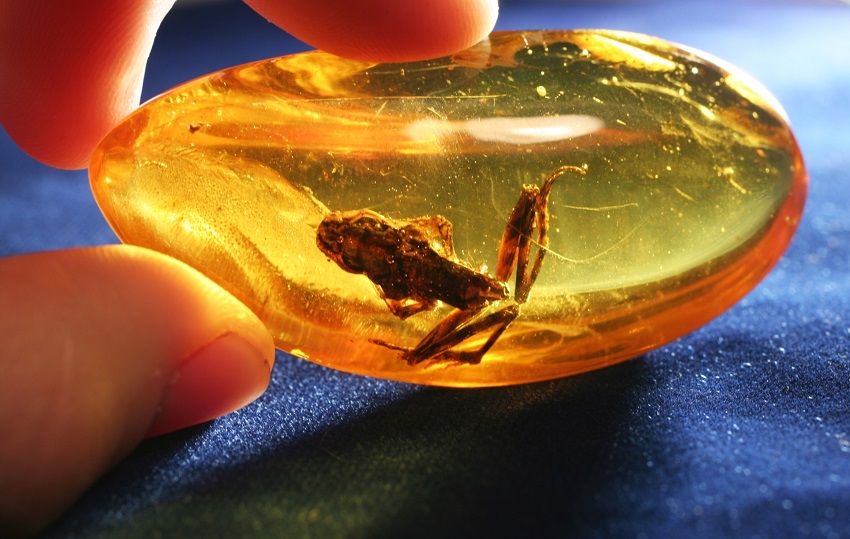We all know that T. rex is the king of the dinosaurs. Fossils of T. rex show that it was huge, had sharp claws and teeth, and likely few predators. Now, scientists are exploring the opposite end of the spectrum:
The world’s smallest dinosaur fossil, no bigger than the world’s smallest living bird: the Bee Hummingbird.

This newly found specimen, dubbed “Oculudentavis khaungraae,” represents the smallest dinosaur currently known to science. To fully understand how and why this tiny dinosaur came to be and was ultimately discovered by science, we have to take a look at a few biological concepts!
Miniaturization
Essentially, size can be a huge factor when it comes to reproductive success. The blue whale, the world’s largest animal (even bigger than dinosaurs), has evolved to be large to escape predation from large sharks. At the other end of the spectrum, many other animals find more success as tiny creatures. These creatures, being so small, are able to occupy niches unavailable to larger animals.
Miniaturization is a process that has taken place across many different evolutionary lines. The process involves a species rapidly decreasing in size, often to fill a niche newly available to the population. There are many, many examples of this in nature.
Fennec foxes have gotten smaller to deal with the harsh desert conditions they live in. Pygmy marmosets eat small insects in the Amazon rainforest, allowing them to occupy the same region as other primates that eat fruit. Even the Bee Hummingbird (pictured above) has evolved as the world’s smallest bird to gain access to nectar in flowers unavailable to larger birds.
Interestingly, this process typically takes place on islands. Islands, because they are separated from the ecosystem of the mainland, often develop their own ecosystem. When a full-sized group of organisms colonizes the island, they are subject to the rules of the new ecosystem. Oftentimes, their preferred niche is no longer available, so they must adapt. Sometimes, this adaptation comes in the form of getting much smaller. This gives the population access to new nutrients and resources.
Unsurprisingly, researchers found the smallest dinosaur ever among fossil deposits that are thought to have originated on an island. But, the tiny creature faced one more enormous challenge in actually being discovered by scientists: fossilization.
Fossilization
Typically, fossilization occurs when the remains of a dead animal are covered in mud, tar, or another oxygen-depleted substance. This stops the process of decomposition, which would otherwise devour the dead animal and recycle it as nutrients in the environment.
Small organisms have a much harder time at becoming fossilized because they are simply more fragile and more likely to break down over time. Fortunately for these scientists, this particular minuscule dinosaur was a fan of tree sap.
Tree sap, the same stick stuff that you can find leaking out of your neighborhood tree, has been a consistent feature of trees for millions of years. Fortunately for scientists, some trees put off a tremendous amount of sap.
Small animals, like the newly discovered dinosaur, accidentally get stuck in the sap. This could have happened before the dinosaur died, or the sap could have flowed around the animal after its death. Either way, the sap contains very little air – stopping the action of decomposers. After millions of years, the sap hardens to become amber. Amber has yielded some truly amazing fossil discoveries, such as this frog, completely intact millions of years after its death:

So, it was lucky that this little, bird-like dinosaur found its way into a flow of sap. Otherwise, we might have never known that it existed!
